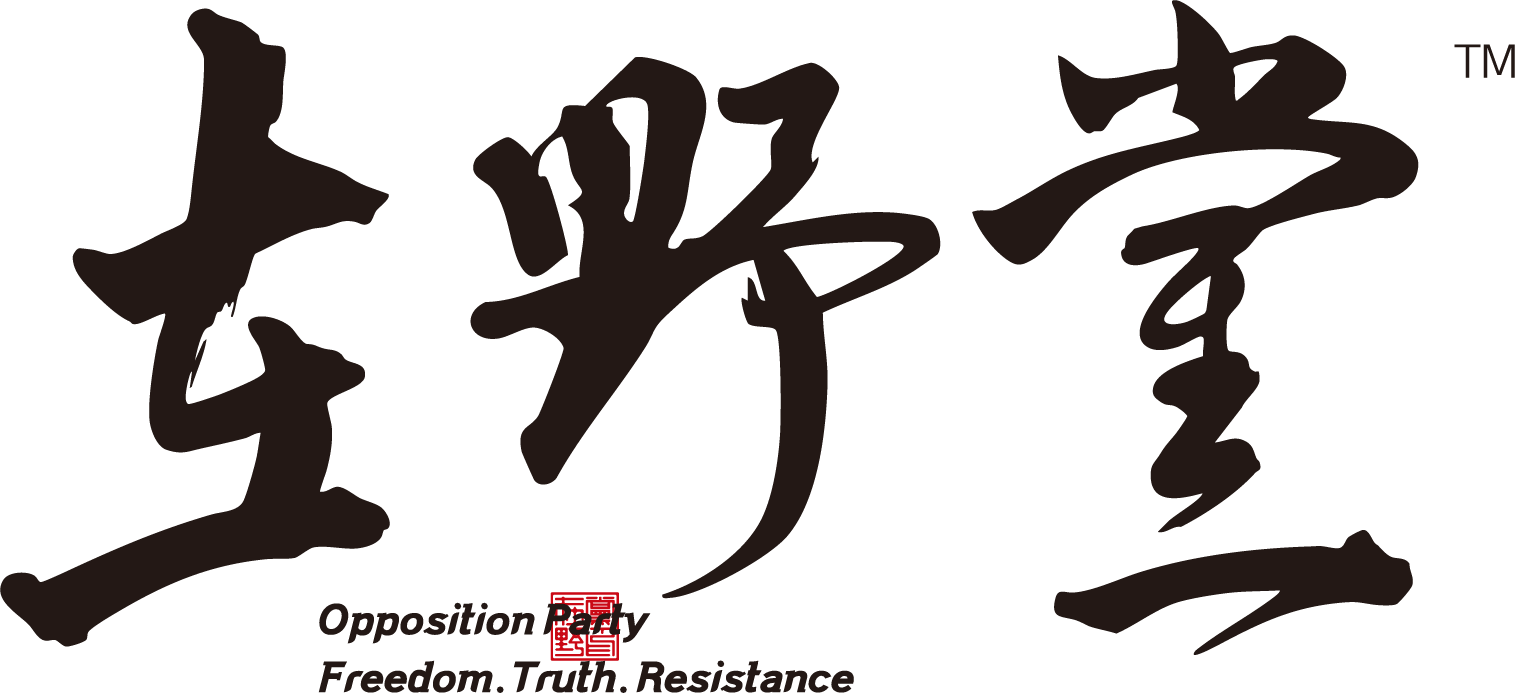作者:叶长青(大陆学生)
编辑:李之洋 责任编辑:胡丽莉 校对:熊辩 翻译:彭小梅
吉拉斯出生于黑山的一个农民家庭。18岁考入贝尔格莱德大学,期间接触马克思主义并加入左翼社团,1932年加入南斯拉夫共产党。到1940年代,他已成为中央政治局委员,并在50年代初期被视为铁托的接班人。
1948年,南斯拉夫坚持走自己的“民族社会主义道路”(national path),与苏联在对外政策、意识形态、对斯大林的态度等方面彻底分裂。分裂后,吉拉斯依然信仰社会主义,但他逐渐看到体制内部的腐败与僵化:官僚主义、特权阶层、党内集权、对批评的压制。1953年他出任国家主席,1954年因主张政治自由化而被撤职。1956年,他因公开支持匈牙利事件被捕入狱,期间将《新阶级》手稿秘密送往国外出版,从此成为共产主义世界的异端与思想先驱。
一、思想起源(Origins)
吉拉斯首先追溯共产主义思想的根源。他指出,唯物主义、辩证法、历史决定论等并非马克思主义独有,而是被共产党人“独占化”为一种“唯一科学”,以此为政治统治提供合法性。共产主义运动在现代化当中,将这些哲学原理说成是“唯一科学”以此为政治统治提供正当性。
在实践中,这些理论逐渐被教条化,成为维护制度与权力的工具。
二、革命的性质(Character of the Revolution)
与资产阶级革命不同,共产主义革命不仅夺取政权,还要重塑社会和经济体系。这使得革命政党不仅成为政治力量,也成为社会治理力量。
革命政党在夺权后,变成同时控制政治与社会的“全能力量”,倾向于集中化、排斥异己、消灭多元,以及政治与经济力量的高度融合。革命后的权力结构中往往会剥夺政治多元性、排斥非党派力量,由党对社会进行全面控制。
三、“新阶级”的形成(The New Class)
这是全书的核心。吉拉斯在这里正式提出“新阶级”(the new class)的概念。他把新阶级理解为:一群占据党政机关的官僚与管理者,他们通过对国家机器的控制,实际掌握了资源、分配权、特权,是一个新的统治集团。在他看来,这个新阶级既不同于传统资本家阶级(因为他们不以私人资本为基础),也不同于无产阶级,他们以“集体政治控制”作为他们的“财产权形式”。
吉拉斯提出:“新阶级”是由党政官僚与管理者组成的统治集团,他们通过掌控国家机器与资源分配,形成一种新的特权阶层。
他分析新阶级如何通过国家结构获得“所有权”形式的权力(即:控制、支配国家资源的权力),而这个权力结构本身就是一种“财产”。
他们不靠私人资本,而是通过“政治控制”取得“所有权形式的权力”。这种权力本身成为他们的“财产”。结果是,名义上的“全民所有”,实质上变成“新阶级所有”。还阐明这个阶级如何在资源分配、待遇、社会地位上不断积累特权,并与大众逐渐分离。
四、党—国家体制(The Party State)
吉拉斯揭示共产党如何通过党国合一来维系统治。分析共产党如何通过党组织与国家机器合一来巩固其统治,党与国家的界限被淡化或合并,党控制行政、军队、安全、意识形态,国家机构仅成附属。
还讨论党的层级制度、干部任命机制、党对行政、意识形态、军事与安全机构的渗透和监督。他指出,在共产主义国家中,党往往成为国家运作的核心,党的决策几乎主导国家机构的全部运作。在这种体制下,表面上的法律、机构、行政分权常常只是形式,真正权力在党内部和党的核心结构中掌握。
五、经济的教条主义(Dogmatism in the Economy)
计划经济在理想上平等,但在实践中僵化、低效。吉拉斯重点在于分析社会主义经济制度中的僵化性(dogmatism)。他认为计划经济、国有化和集中化管理容易固化为教条体系。
吉拉斯批评经济决策常常以意识形态为依据,而不顾效率、创新、市场信号、需求关系等。
虽然名义上生产资料归“全民所有”,但实际上控制权掌握在新阶级手中。普通民众缺乏参与与监督权。
社会缺乏反馈机制与创新动力,资源浪费普遍。在这种制度里,经济体制缺乏弹性与反馈机制,资源分配常出现失误、浪费、扭曲。
六、思想的专制(Tyranny over the Mind)
在意识形态领域,共产党实行全面控制。吉拉斯探讨了意识形态、宣传、文化、教育等对思想控制的机制。
宣传、教育、媒体、文化都被纳入党的领导。 他指出,在共产制度下,思想自由、言论自由、异议、批判等都受到严格限制,党通过宣传、教育、媒体、文化机构支配公共思想领域。
思想自由、言论自由、批判精神被视为“危险思想”。他分析了“思想工作”(ideological work)如何被制度化为一种权力工具,用来维系统治合法性并削弱异议力量。思想工作成为政治统治的工具,知识分子被监控与驯化。
他还强调,思想控制不仅是宣传灌输,还包括组织、惩戒不合规的思想、监控知识分子等机制。
七、目的与手段(The Aim and the Means)
吉拉斯讨论目的与手段之间的关系以及其在新阶级体制中的扭曲。吉拉斯批判那种“目的正当化一切手段”的逻辑——以“人民利益”“社会主义建设”之名行压制与暴力之实。他批判这样一种逻辑:只要目的被视为“正当”(例如“社会主义”“人民利益”),那么几乎所有手段(包括压制、剥夺权利、操控制度)都可以被合法化。
在这种逻辑下,法治与责任被掏空,权力缺乏约束,体制走向自我封闭。 在他看来,这种“目的正当化手段”的逻辑,是新阶级体制滥用权力、法制失灵、责任缺失的基础。他还指出,在这种体制下,监督与制衡机制被边缘化或虚化,权力几乎无约束。
八、本质(The Essence)
吉拉斯对新阶级制度的结构和矛盾进行更抽象和系统的总结。他总结新阶级制度的核心矛盾:权力越集中,合法性越脆弱;特权越多,体制越不稳。他揭示了新阶级体制的内在矛盾:权力集中化导致合法性危机、特权化、统治不稳、危机脆弱性等。
新阶级倾向维护自身利益,压制异议、控制信息、阻止改革。他认为,新阶级的权力结构具有“自我维护”特征:为了保全自身,它倾向压制异己、控制信息、限制权力更替。
这种自我维护机制最终导致体制僵化与衰败。他指出,制度为了维持自身而变得越来越集权、封闭,不利于内部改革或自我调整。
九、民族共产主义(National Communism)
吉拉斯分析“民族化”的社会主义变体。他关注社会主义/共产主义在不同国家语境下的“民族化”或本土变体。他分析“民族共产主义”(national communism)如何被利用于不同国家保持统治合法性,同时作为一种对苏联模式的调整或抵抗策略。
各国共产党以民族主义包装体制,以维持合法性和独立性。但“民族共产主义”往往只是权力集团的另一种掩饰形式,无法触及体制根本问题。他指出,这种民族化可能给体制一定的合法性、认受性和自主空间,但也可能被用于掩盖统治集团的特权和权力集中。他还展望了不同国家(尤其东欧、南斯拉夫、中东欧)的“民族化”变体可能带来的张力与局限性。
十、今日世界(The Present-Day World)
在最后一章里,吉拉斯将目光投向全球。将他的分析置于更广阔的国际与时代背景中,讨论共产主义体系在当时世界(20世纪中叶)所面对的挑战、危机与可能的发展。
他考察社会主义国家在全球政治中的竞争、合法性危机、制度疲弱以及新阶级体系所面临的内外压力。他看到社会主义国家在冷战中的危机:合法性削弱、经济停滞、思想封闭。
他认为,如果体制无法开放与自我修复,终将走向崩溃。他对未来的可能路径(改革、瓦解、替代)做出思考,同时指出新阶级体制在国际冷战格局中的弱点。
🕊 结语
吉拉斯在良知与权力之间,选择了良知。他本可享有权力与荣耀,却选择揭露体制的真相,付出自由的代价。
像所有敢于对抗权力、坚持真理的思想者一样,他让世界更接近自由与清醒。
正因有这样的灵魂,人类社会才得以不断前行。
我们应该铭记吉拉斯这些选择良心的英雄,他们不该被遗忘,正是因为有了他们的存在,才推动了人类社会的进步。
“The New Class”: The Emerging Ruling Group Under Communist Regimes
By Changqing Ye (Mainland Student)
Edited by Zhiyang Li, Proofread by Lili Hu and Bian Xiong Translated by Xiaomei Peng
Milovan Djilas was born into a peasant family in Montenegro. At 18, he entered the University of Belgrade, where he came into contact with Marxism and joined left-wing student circles. In 1932, he became a member of the Communist Party of Yugoslavia. By the 1940s, he had risen to the Politburo, and by the early 1950s, he was widely regarded as Tito’s successor.
In 1948, Yugoslavia insisted on pursuing its own national path of socialism, breaking with the Soviet Union completely over foreign policy, ideology, and attitudes toward Stalin. Even after the split, Djilas remained a believer in socialism. Yet over time, he saw the corruption, rigidity, and hypocrisy within the system: bureaucratism, privilege, centralization, and suppression of dissent. In 1953, he became President of the State, but a year later was dismissed for advocating political liberalization. In 1956, he was imprisoned for openly supporting the Hungarian uprising. While in prison, he secretly sent the manuscript of The New Class abroad for publication, thus becoming an ideological heretic and a moral pioneer in the communist world.
I. Origins
Djilas traced the philosophical roots of communism. He argued that materialism, dialectics, and historical determinism were not unique to Marxism, but the Communists monopolized these ideas, branding them as the only science to legitimize their political rule.
In practice, these philosophical doctrines became dogmas—tools for defending the system and consolidating power.
II. The Character of the Revolution
Unlike bourgeois revolutions, communist revolutions did not merely seize political power—they sought to reshape the entire social and economic structure. Thus, the revolutionary party became not only a political force but also the central administrative and social power.
After seizing power, the revolutionary party evolved into an all-encompassing authority that controlled both politics and society. It tended toward centralization, exclusion of pluralism, and the fusion of political and economic power. Political diversity was abolished, and non-party forces were marginalized or eliminated.
III. The Formation of the “New Class”
This is the core of The New Class. Djilas defined the “new class” as a group of bureaucrats and administrators occupying positions in the party and state apparatus, who, through their control of the machinery of power, had become a new ruling stratum.
This class differed from both the bourgeoisie and the proletariat:they did not own private capital but instead possessed collective political control, which functioned as a new form of property.
The “new class,” through its command of the state, exercised ownership-like power over national resources. This control—though officially justified as “public ownership”—became, in substance, the property of the new class.
Djilas showed how this group accumulated privilege through resource distribution, material benefits, and social hierarchy, gradually distancing itself from the ordinary people in whose name it ruled.
IV. The Party–State System
Djilas exposed how communist parties maintained their dominance through the fusion of party and state. The party and government apparatus became inseparable: the party controlled the administration, the military, security, and ideology, reducing the state to a mere subsidiary organ.
He analyzed the hierarchy of the party structure, the system of cadre appointment, and the pervasive penetration of the party into all state institutions. Under such a system, legal institutions and administrative divisions were often mere façades—the real power resided in the inner core of the party.
V. Dogmatism in the Economy
In theory, planned economies were built on equality; in practice, they became rigid and inefficient. Djilas criticized the socialist economy for its dogmatism: economic decisions were made according to ideological correctness rather than practical effectiveness.
While ownership of the means of production was nominally “public,” control was monopolized by the new class. Ordinary citizens had no right of participation or oversight. Lacking feedback and innovation, socialist economies suffered from waste, distortion, and stagnation.
VI. Tyranny over the Mind
In the realm of ideology, the Communist Party exercised total control. Djilas explored the mechanisms through which ideology, propaganda, culture, and education were used to dominate human thought.
Propaganda, education, media, and the arts were all brought under the Party’s leadership. He observed that under the communist system, freedom of thought, freedom of speech, dissent, and critical inquiry were all strictly suppressed. Through its control of propaganda, education, cultural institutions, and the press, the Party dominated the entire sphere of public consciousness.
Freedom of thought, freedom of expression, and the spirit of criticism were labeled as dangerous ideas. Djilas analyzed how “ideological work” was institutionalized as an instrument of power—used to sustain political legitimacy and to weaken the forces of dissent. Ideological work thus became a tool of political domination; intellectuals were monitored, disciplined, and domesticated.
He further emphasized that thought control was not limited to propaganda or indoctrination. It also involved organizational mechanisms for punishing nonconforming ideas and systematic surveillance of the intellectual class.In this way, the regime sought not only to shape people’s words, but to regulate the very process of thinking itself.
VII. The Aim and the Means
Djilas explored how communist regimes distorted the relationship between ends and means. He condemned the logic that “the ends justify the means”—that any act, no matter how repressive or violent, could be justified in the name of “the people’s interest” or “socialist construction.”
This moral inversion hollowed out the rule of law and accountability. Power became unrestrained; systems turned inward and self-serving. Under such reasoning, supervision and checks were rendered meaningless, and despotism became self-perpetuating.
VIII. The Essence
Djilas provided a more abstract and systematic summary of the structure and contradictions of the new-class system. He identified its central paradox: the more concentrated the power, the weaker its legitimacy; the greater the privilege, the more unstable the regime. He revealed the internal contradictions of the new-class order— that political centralization inevitably breeds a crisis of legitimacy, that privilege produces fragility rather than strength, and that the system’s very success in consolidating power becomes the seed of its decline.
The new class, by its nature, seeks above all to preserve its own interests. It suppresses dissent, monopolizes information, and obstructs reform. Djilas argued that the power structure of this class possesses a built-in self-preserving character: to safeguard itself, it instinctively moves to silence opposition, control information, and restrict the rotation of power.
This mechanism of self-preservation ultimately leads to stagnation and decay. The system, in its effort to perpetuate itself, becomes increasingly centralized and closed, thereby losing the capacity for reform or self-correction. In the end, what began as a revolution of liberation turns into a structure of confinement.
IX. National Communism
Djilas analyzes the “nationalization” of socialist variants. He focuses on how socialism or communism becomes “nationalized” or localized within different national contexts. He examines how national communism has been used by various countries to maintain regime legitimacy while simultaneously serving as an adjustment to—or resistance against—the Soviet model.
Communist parties in different nations often wrapped their systems in nationalism to preserve both legitimacy and independence. However, Djilas points out that national communism frequently functions merely as another disguise for the ruling elite, unable to address the system’s fundamental flaws. He notes that this nationalization may grant the regime a degree of legitimacy, acceptance, and autonomy, yet it can also be exploited to conceal the privileges and concentration of power within the ruling class. Finally, he considers the tensions and limitations that such nationalized variants may produce in different regions—especially in Eastern Europe, Yugoslavia, and Central and Eastern Europe.
X. The Present-Day World
In the final chapter, Djilas turned his gaze to the global stage. He placed his analysis within a broader historical and international context, exploring the challenges, crises, and potential futures faced by communist systems in the mid-twentieth century.
He examined the political competition, crises of legitimacy, institutional weakness, and internal and external pressures confronting socialist states. Djilas observed that during the Cold War, communist regimes were already showing deep structural fatigue: their legitimacy was eroding, their economies stagnating, and their intellectual life closing in on itself.
He warned that any system unable to open itself or renew from within would inevitably collapse. Djilas contemplated the possible paths ahead—reform, disintegration, or complete replacement—and underscored the inherent fragility of the new-class structure within the global Cold War order.
Epilogue
Between conscience and power, Djilas chose conscience. He could have lived in privilege and glory, yet he chose to expose the truth—and paid the price with his freedom.
Like all thinkers who dared to confront tyranny and stand by truth, he brought the world closer to freedom and clarity. It is because of such souls that human civilization continues to move forward.
We must remember these heroes of conscience. They should never be forgotten, for it is through their courage and sacrifice that the progress of humanity endures.


我的兄弟邹巍-rId6-1270X844.jpeg?w=218&resize=218,150&ssl=1)




